These Upcoming Rockets Have Us Stoked About the Future of Spaceflight
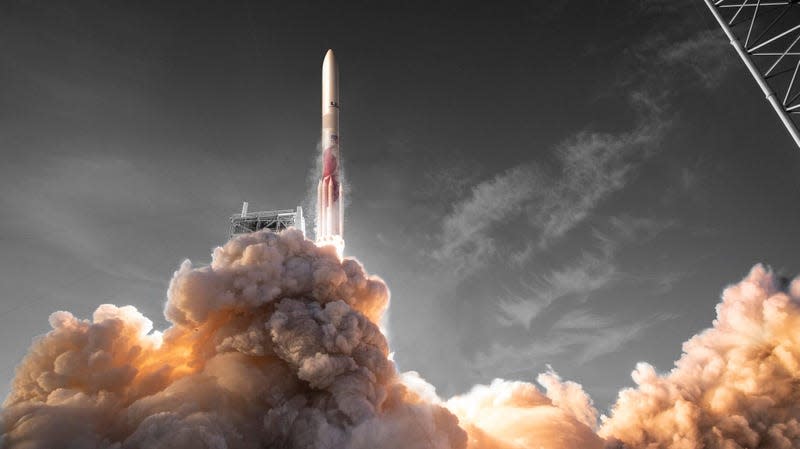
Humans have been launching rockets to space for nearly 80 years, yet it feels as though we’ve only hit the tip of the iceberg in terms of what’s possible. These upcoming rockets provide a promising glimpse of what we can expect during the next era of spaceflight.
2022 was witness to 186 launch attempts, of which 180 successfully reached orbit. It was a record year for rockets, featuring 44 more launches than 2021. The pace at which we are now placing objects into space is as unprecedented as it is breathtaking. We’re in a new space race, with a host of private companies vying for orbital real estate and a chance to roll out entirely new space-based capabilities.
Read more
These Winning Close-Up Photos Show Life That's Often Overlooked
Remembering Enterprise: The Test Shuttle That Never Flew to Space
A key to much of this success, whether now or in the future, is having rockets that are efficient, reliable, and accessible. As these 10 upcoming launch vehicles attest, we’re increasingly making this happen.
SpaceX’s Starship

Arguably the most important launch vehicle currently in development, Starship promises to revolutionize the spaceflight industry. SpaceX pitches the 394-foot-tall (120-meter) rocket as a transportation system “designed to carry both crew and cargo to Earth orbit, the Moon, Mars and beyond.” The company is currently under contract with NASA to leverage the system as a lunar landing for future Artemis missions to the Moon. SpaceX CEO Elon Musk envisions the fully reusable Starship as the vehicle that will make colonization of Mars possible, but his timelines on this leave much to be desired, as does his strategy for making it happen.
The liquid methane-powered Starship consists of two stages, the Starship upper stage and the Super Heavy booster, both of which are being designed to perform controlled vertical landings. After stage separation, the 230-foot-tall (69-meter) booster will return to the launch site, where mechanical arms mounted to the launch tower will attempt to “catch” the descending Super Heavy.
The Super Heavy is powered by 33 Raptor engines, combining for an estimated 16.7 million pounds of thrust at liftoff. The launch vehicle should be capable of hoisting 150 metric tons (330,000 pounds) to low Earth orbit. The upper stage has undergone several suborbital tests and performed a single successful landing, while the booster has gone through a series of static fire tests, including a full-scale static fire test on February 9 during which 31 of the 33 engines were engaged. SpaceX CEO Elon Musk said that’s sufficient thrust for a trip to space, setting the stage for the first orbital test of the fully integrated system later this month (pending a launch license from the FAA).
ULA’s Vulcan Centaur

Another heavy-lift launch vehicle we’re excited about is the two-stage Vulcan Centaur being developed by United Launch Alliance. The fully expendable 202-foot-tall (62-meter) rocket, in development since 2014, is set to replace ULA’s Atlas V and Delta IV rockets, both of which have been in use for the past two decades. “The Vulcan Centaur Program was established by ULA to reduce cost, increase launch capability and provide the opportunity to partner with companies in the United States to develop rocket engines that eliminate reliance on the current Atlas V Russian-supplied RD-180 engines,” according to NASA.
The rocket’s first stage will get its power from two Blue Origin-built BE-4 methane-fueled engines. The booster can be assisted by as many as six Northrop Grumman Graphite Epoxy Motor solid rocket boosters. With all six SRBs in play, Vulcan Centaur should be able to lift 27.2 metric tons (60,000 pounds) to low Earth orbit and 6.5 metric tons (14,300 pounds) to geosynchronous orbit. (By comparison, SpaceX’s Falcon 9 can carry 22.8 metric tons to LEO.)
The temps in Florida may be hot, but #VulcanRocket got frosty! In preparation for the Cert-1 Vulcan flight, the ULA team accomplished the first stage tanking demonstration yesterday at the launch pad. #CountdowntoVulcan pic.twitter.com/ql9RIvkxYb
— ULA (@ulalaunch) March 11, 2023
Vulcan’s first flight was supposed to happen in 2020, but a delay pushed it to 2022, which also didn’t happen. Excitingly, ULA now says it’s ready to light this candle, with a launch from Cape Canaveral Space Force Station in Florida scheduled for May 4. For this inaugural mission, the Vulcan will carry a lunar lander built by Astrobotic, a memorial capsule from Celestis, and a pair of demo Project Kuiper internet satellites for Amazon. Future launches include the first launch of the Dream Chaser spaceplane and several missions chartered under U.S. Space Force’s National Security Space Launch (NSSL) program.
Japan’s H3
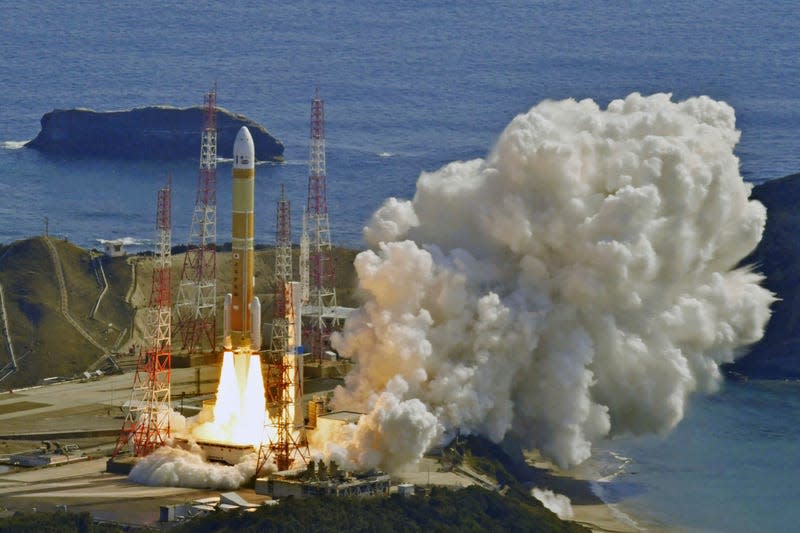
Technically speaking, the two-stage H3 rocket has already launched, but its second stage engine failed to ignite during its inaugural flight on March 6. Ground controllers were forced to issue a self-destruct command, in what’s a major setback for Japan’s space plans. The nation’s next flagship rocket, a collaboration between Japan Aerospace Exploration Agency and Mitsubishi Heavy Industries, is set to replace Japan’s H-IIA and H-IIB rockets, but H3 won’t fly for the foreseeable future as investigators try to figure out what went wrong. JAXA had plans to use H3 to launch its Martian Moons eXploration mission next year, but that’s now in jeopardy, as are plans to use it to shuttle supplies to the ISS.
The standard H3 configuration is almost 207 feet (63 meters) tall and with a core stage diameter of 17 feet (5.2 meters). It has the capacity to lift 4 metric tons (8,818 pounds) to Sun-synchronous orbit and between 4 and 7.9 metric tons (8,818 - 17,417 pounds) to geostationary transfer orbit (GTO). In the future, upgrades could enable the rocket to transport cargo to the Moon, with specially configured H3s capable of lifting 28.3 metric tons (62.390 pounds) to low Earth orbit and 14.9 metric tons (32,848 pounds) to GTO. The liquid hydrogen-fueled first stage features brand new LE-9 engines, which appeared to work properly during the failed first launch.
Blue Origin’s New Glenn
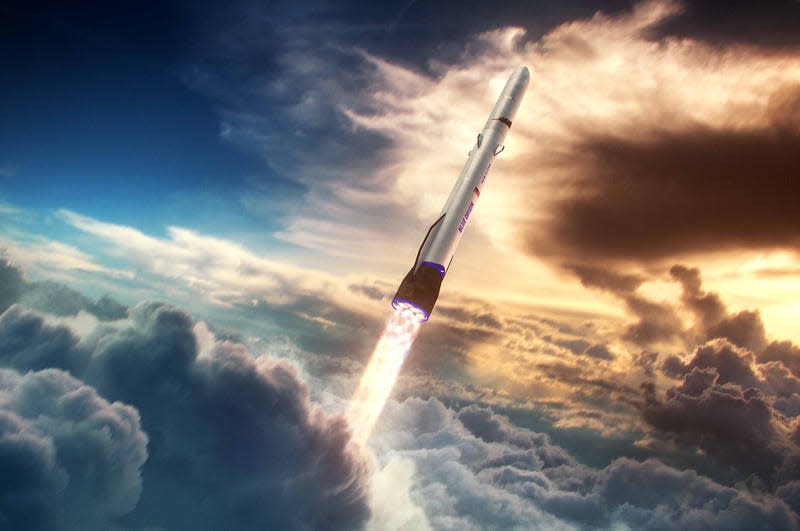
Blue Origin founder Jeff Bezos has a suborbital rocket in New Shepard, but the Amazon billionaire still hasn’t lobbed a rocket to Earth orbit. And instead of taking an iterative, SpaceX-like approach to spaceflight, Bezos is vying for the immediate slam dunk with New Glenn, a gigantic future rocket named in honor of NASA astronaut John Glenn. Blue Origin has been working on the $2.5 billion heavy-lift rocket since 2014, and, like so many other pending rockets, its development has been subject to multiple delays. New Glenn is slated to launch later this year, but we’ll believe it when we see it.
New Glenn: The Road to Space
The 313-foot-tall (95-meter) rocket features a reusable first stage that’s powered by seven methane-burning BE-4 engines. The booster is capable of exerting 3.85 million pounds of thrust at liftoff, the company claims. The second stage’s hydrogen-fueled BE-3U engines are a modified version of ones used on New Shepard. Once operational, New Glenn will hoist 45 metric tons to low Earth orbit and 13 metric tons to geostationary transfer orbit. Blue Origin expects around 25 flights from the lower stage before they get retired. NASA is already counting on the unflown rocket to launch a mission to Mars next year, so Blue Origin needs to get cracking.
Arianespace’s Ariane 6

Arianespace, in partnership with the European Space Agency, has been working on the Ariane 6 expendable launch system for nearly a decade. Once ready—hopefully during the fourth quarter of 2023 or early 2024—the 197-foot-tall (60-meter) rocket will come in two configurations, either with two or four strap-on solid rocket boosters. The lower stage’s Vulcain 2.1 engine runs on a liquid hydrogen-oxygen mixture, as does the Vinci upper stage. Ariane 6 has enough power to lift 10.3 metric tons to low Earth orbit.
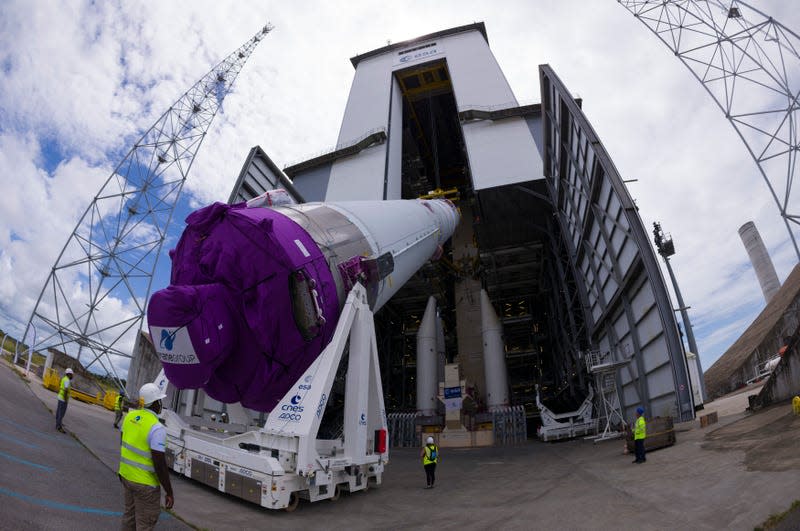
Arianespace needs to get this rocket flying, as the backlog of pre-booked flights looks intense. In addition to several European Space Agency missions, the list of customers includes Intelsat, ViaSat, and Amazon, the latter needing the rocket to deliver its Kuiper internet satellites to orbit. Compounding the situation in Europe is the recent failure of Arianespace’s Vega-C rocket, which failed during its second orbital mission in December. A faulty nozzle was cited as the cause, but it’s not yet clear when Vega-C will fly again.
Relativity Space’s Terran R
We’re super stoked about Relativity Space’s Terran 1 rocket, a yet-to-fly expendable launch vehicle primarily built from 3D-printed parts, but the future is all about reusability. Founded by former Blue Origin engineers, Relativity is pushing ahead with Terran R—a fully reusable 3D-printed launch vehicle that is “made for next-gen satellites” and “multiplanetary transport,” the company says.
This Is Terran R
Relativity is aiming to build both Terran 1 and Terran R from raw materials in just 60 days, the company claims. Once operational, the methane-powered rocket will lift 20 metric tons to low Earth orbit. The rocket will stand 216 feet (66 meters) tall and be capable of exerting 2.1 million pounds of thrust at liftoff. Relativity hopes to launch Terran R from Cape Canaveral, Florida, in 2024.
Rocket Lab’s Neutron
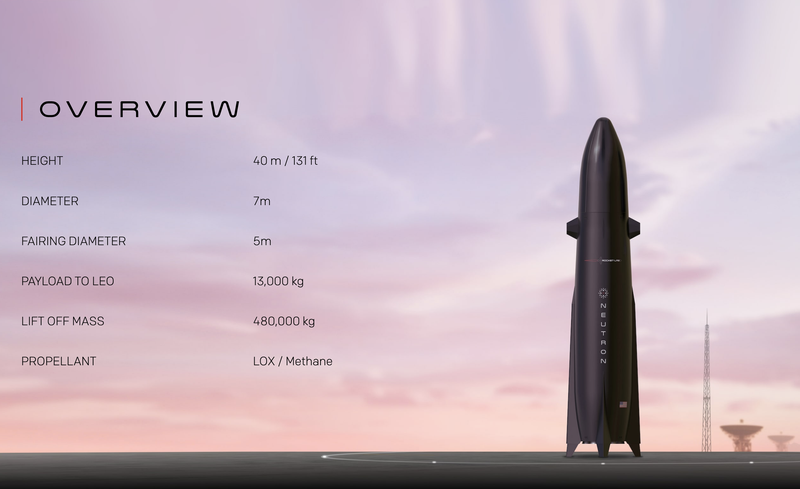
Rocket Lab CEO Peter Beck refers to the medium-lift Neutron rocket as a “purpose-built megaconstellation building machine.” With an anticipated first flight in 2024, Neutron will feature a unique lightweight carbon composite structure and an innovative “captive” fairing design on the reusable first stage. Standing 131 feet (40 meters) tall, Neutron will use its 3D-printed engines to lift 13 metric tons to low Earth orbit.
Introducing Neutron
The company, based in the United States and New Zealand, is largely responsible for introducing 3D-printing to the spaceflight industry, having built the first 3D-printed engine to reach space. Rocket Lab claims it can now print one engine every 24 hours. In addition to launching small satellites en masse, Rocket Lab envisions Neutron as a means for transporting humans to space.
ABL’s RS1
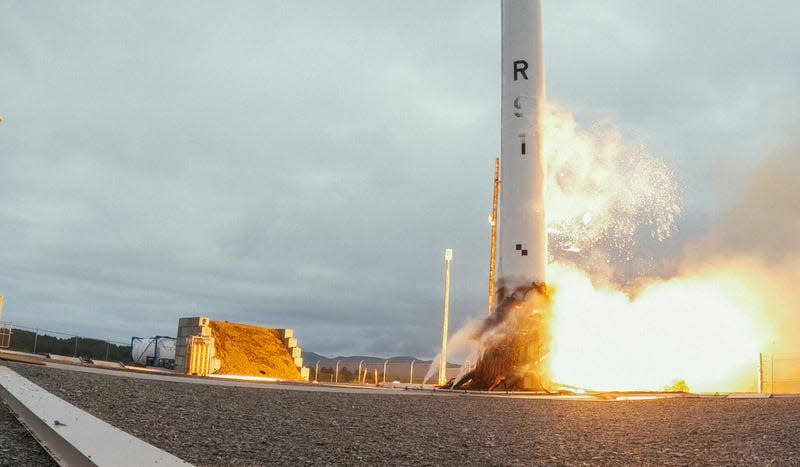
ABL Space System’s RS1 left the launch pad this past January—but just barely. Lifting off from Alaska’s Pacific Spaceport Complex, the 88-foot-tall (27-meter) rocket rose to a height of 761 feet (232 meters), but then all nine of its main stage engines shut down simultaneously. The fully loaded rocket fell back to Earth, creating a mushroom cloud and spilling an estimated 5,200 gallons of Jet Fuel A (a kerosene-based fuel) onto the forested Alaskan landscape. The official cause of the anomaly is not yet known, but a fire in the first stage may have triggered a power failure.
Not a great start. Assuming the program gets back on track, ABL is poised to carve a niche for itself in the industry with its easily deployable two-stage RS1 launch system. Indeed, rapid launch is the key, as “minimal infrastructure and streamlined operations allow us to execute a launch in hours, not months,” according to the company. The company has attracted the attention of the U.S. Air Force, which signed two contracts with ABL to the tune of $44.5 million. RS1 is designed to launch 1.35 metric tons to low Earth orbit, at the very reasonable price of $12 million per launch, according to CNBC.
Firefly’s Antares 300 (okay, and also Alpha)
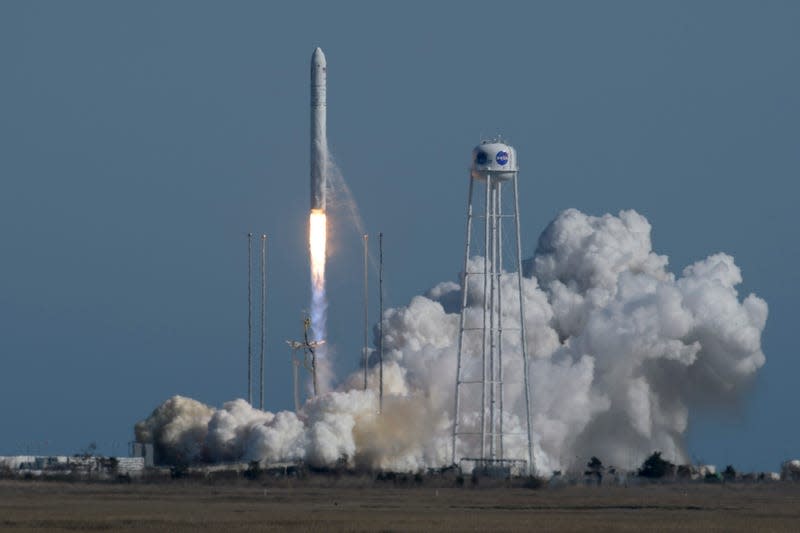
Technically, this rocket already exists. But Northrop Grumman’s medium-lift Antares rocket, which debuted in 2013, is currently without an engine, specifically the Russian-built RD-181. Russia is no longer supplying these engines to the U.S. on account of Western sanctions, prompting Northrop to partner with Texas-based Firefly Aerospace. Firefly is contracted to provide the first stage booster, dubbed Antares 300, for the expendable rocket. Seven of the company’s Miranda engines will power the booster, making it more powerful than before. Northrop will continue to provide the Castor 30XL solid rocket motor for the Antares upper stage.
Firefly Alpha, a two-stage rocket designed for delivering small satellites to orbit, failed on its first launch in September 2021 but managed to reach orbit on its second attempt. That said, it was not a complete success, as its payloads fell back to Earth one week later, a result of the rocket not reaching its intended orbit. So this rocket remains on our wish list of future launch vehicles.
China’s Long March 9
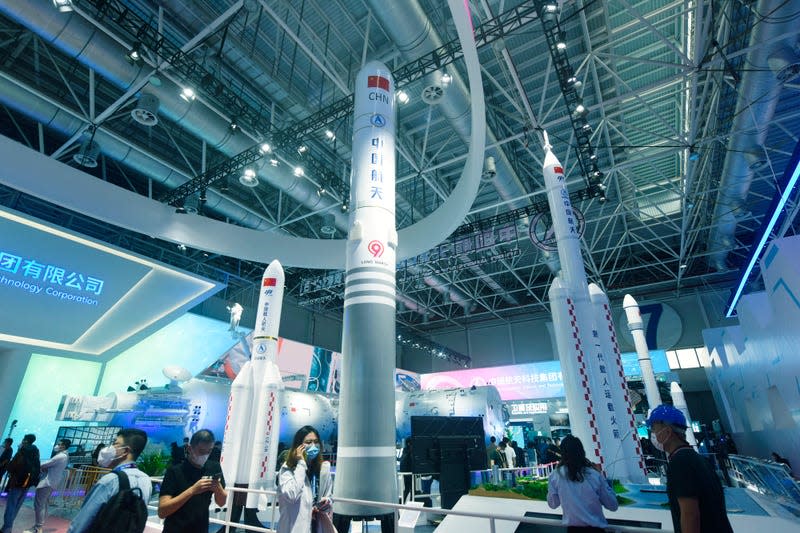
The upcoming Long March 9 is China’s answer to Starship—a reusable super heavy-lift launch vehicle. According to SpaceNews, the three-stage giant will stand 108 meters tall and be capable of delivering 150 tons to low Earth orbit. China’s space planners had originally intended for the rocket to be fully expendable, but those plans have changed.
Rockets that aren’t reusable have no future
— Elon Musk (@elonmusk) November 9, 2022
The booster would be powered by 26 methane-fueled engines, each capable of exerting 200 tons of thrust. The Long March 9 is still very much in the realm of vaporware, with an anticipated first launch no earlier than 2030 and realistically not until 2035. China has its own lunar program to rival NASA’s Artemis, and this rocket will very likely play a role in those future missions to the Moon.
More from Gizmodo
Sign up for Gizmodo's Newsletter. For the latest news, Facebook, Twitter and Instagram.

